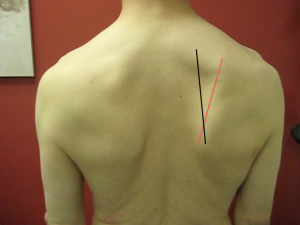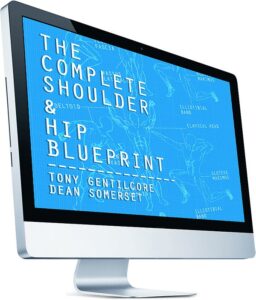
Shoulder Strategies and Hip Helpers: Part 2
This is the second half of my collection of take-home points from reviewing The Complete Shoulder and Hip Blueprint from Tony Gentilcore and Dean Somerset. In case you missed the first half, you can check out Part 1 here. Additionally, I should offer a friendly reminder that the introductory $60 off discount on this great resource ends tonight at midnight; you can learn more here.
6. Shifting low threshold exercises to a high threshold strategy may yield faster results.
Dean goes to great lengths to discuss how proximal (core) stability affects distal (extremity) mobility. In doing so, he cites four examples:
a. Doing front planks may help one to gain hip external rotation.
b. Doing side planks may help one to gain hip internal rotation.
c. Doing dead bugs may help to improve your deep squat.
d. Training active hip flexion (one joint) may help one to to improve a straight leg raise (multiple joints).

With that said, there is a HUGE clarification that must be made: these exercises are all performed with HIGH TENSION. In other words, if you can do eight reps of dead bugs, you aren’t bracing hard enough.
To some degree, this flies in the face of the conventional wisdom that there are high-threshold exercises and low-threshold exercises – and most folks would assume the aforementioned four drills would fall in the low-threshold category. That said, I think a better classification scheme would be high- and low-threshold STRATEGIES. In other words, there is a time to treat a plank or dead bug as a low threshold drill, but also scenarios under which bracing like crazy is appropriate. Trying to create distal mobility is one such example.
That said, don’t go and turn everything you do into a high-threshold strategy! This leads me to…
7. Improving mobility is a combination of sympathetic and parasympathetic activity.
I loved this quote from Dean so much that I replayed it a few times so that I could type up this quote:
“If you hold your breath, you’re going to limit your mobility. If you breath through the stretch, you’re going to access a greater range of motion than you had before. So, it’s kind of a dance between parasympathetic and sympathetic and neural activation. You want to be able to use high-threshold sympathetic type stuff to fire up the nervous system and produce that stability, but you want to use parasympathetic stimulation – that long inhale, long exhale – to be able to use that range of motion after you’ve built the stability.”
That’s pure gold right there, folks.
8. The term “scapular stability” is a bit of a misnomer.
Nothing about the scapula is meant to be stable. If it were meant to be stable, it would have so many different muscular attachments (17, in fact) with a variety of movement possibilities. A better term would be something originally popularized by physical therapist Sue Falsone: controlled mobility.

9. Don’t assume someone’s “aberrant” posture means an individual will be in pain.
Posture is a complex topic, and the relationship between resting posture and pain measures is surprisingly very poorly established in the research world. We can walk away from this recognition with two considerations:
a. It’s important to assess movement quality, and not just resting posture.
b. Use posture as information that guides program design and coaching cues rather than something that tries to explain or predict injuries.

10. Teach movements from the position where relative stiffness principles are challenged the most – but cue high-threshold tension.
During one of his presentations, Dean was coaching a hip flexor stretch in the lunge position, and it immediately got me to thinking about the principle of relative stiffness. In this position, if there isn’t adequate anterior core control, lumbar extension will occur instead of hip extension. And, if there isn’t solid glute recruitment, there will be a tendency of the head of the femur to glide forward in the socket during the hip extension that does occur.In other words, being able to brace the core and have solid glute activation is key to making sure that the individual is in a good place at this position where movement is challenged the most.

In this instance, Dean cued a high-threshold strategy that allowed him to effectively coach the movement from the most challenging position – which is somewhat counterintuitive to what we’ve always assumed as coaches (“win the easy battles” first by owning the simple ranges-of-motion). However, if you can get to the appropriate position (adequate passive ROM) and educate a trainee on how to establish a bracing strategy, chances are that you can speed up the learning process.
As I thought about it, this is something we do quite commonly with our end-range rotator cuff strengthening exercises, but I simply haven’t applied it nearly as much at the hip as we do at the shoulder. It’s definitely something I’ll be playing around with more moving forward.
Last, but certainly not least, just a friendly reminder that today is the last day to get the introductory $60 off discount on The Complete Shoulder and Hip Blueprint. As you can probably tell from these posts, I’ve really enjoyed going through it myself, and would highly recommend it to any fitness professionals and rehabilitation specialists out there. Click here to learn more.



